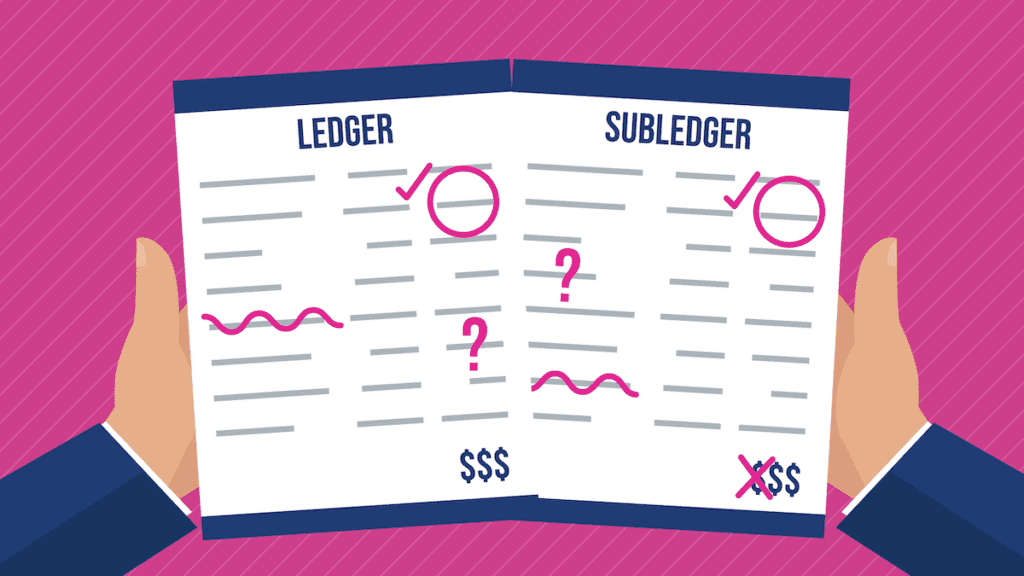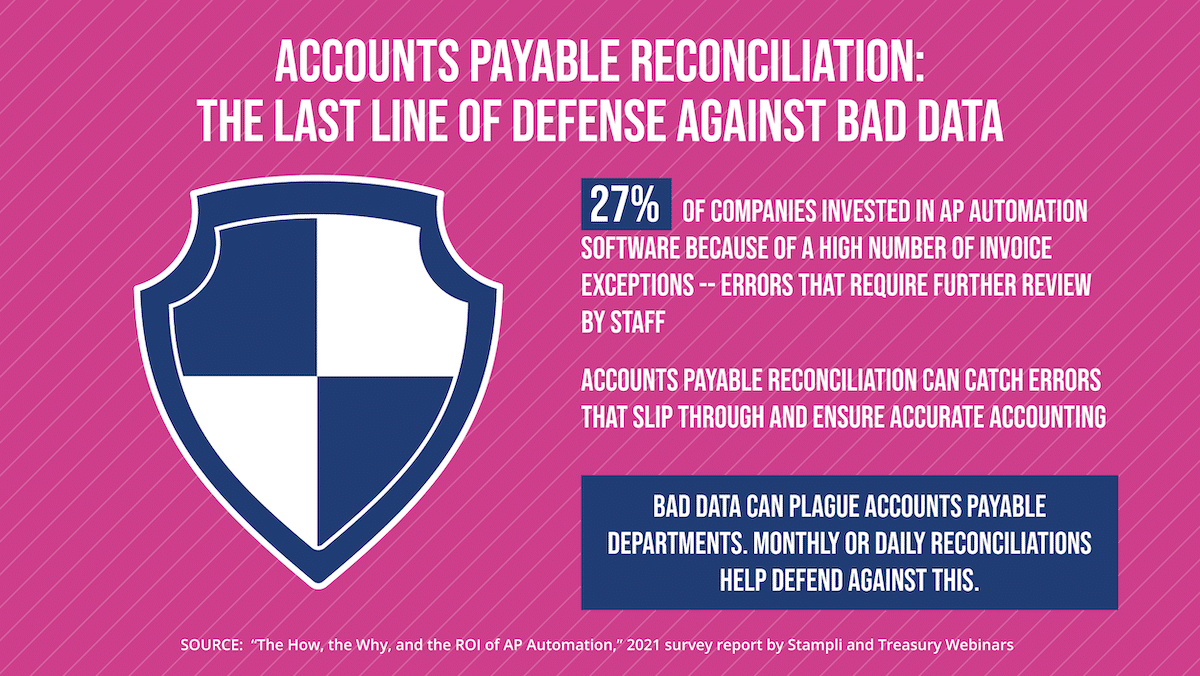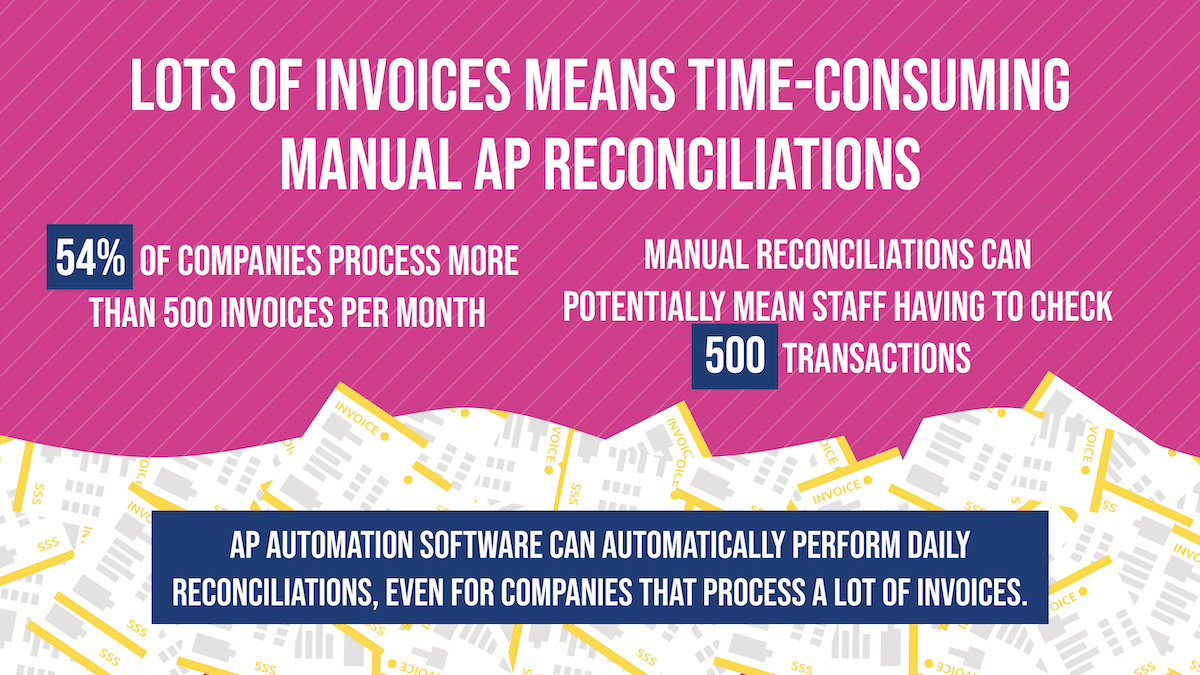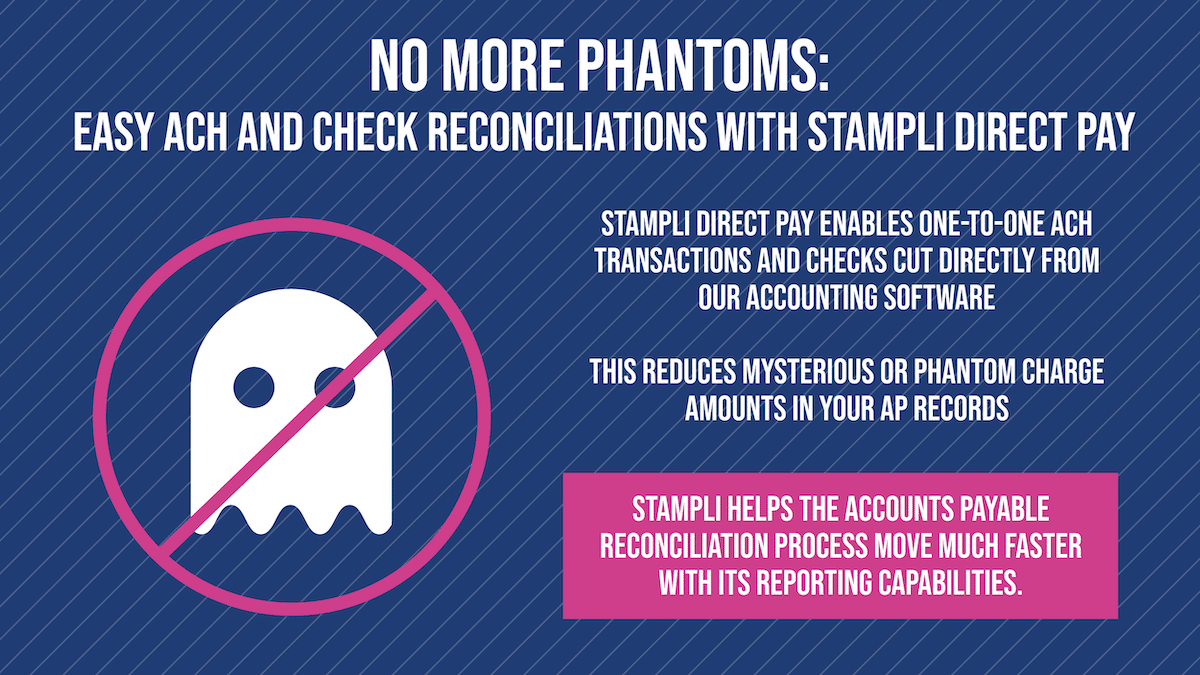Why Your Accounts Payable Reconciliation Process Needs Automation

When accounts payable (AP) departments pay bills, they sometimes have to operate with blind faith that general ledger and AP balances are accurate. After all, it doesn’t take much to throw a balance off and it can be weeks, if not months before errors are caught.
The solution to this? Following a frequent accounts payable reconciliation process, comparing different sets of financial records to ensure that everything is as it should be.
Reconciliation is an essential exercise, though it can be tedious, time-consuming, and expensive for companies with manual accounts payable processes. Today, we’re going to explore the basics of the accounts payable reconciliation process, why automation is vital to keep it running smoothly, and how Stampli can help.
Accounts Payable Reconciliation Process Basics

The accounts payable reconciliation process involves comparing balances in two or more sets of financial records, often a general ledger and a subledger, accounts payable aging report, or dashboard that shows outstanding balances to suppliers and vendors. Typically, controllers, CPAs, AP staff, or others perform reconciliations by hand or use software that can handle a lot of the heavy lifting.
Let’s look at some of the basics when it comes to reconciliation.
Benefits of Accounts Payable Reconciliation
There are a number of benefits associated with AP reconciliation. Performing reconciliation verifies, at the most basic level, that balances don’t vary between different sets of books. In a 2021 survey report by Stampli and Treasury Webinars, “The How, the Why and the ROI of AP Automation” 27% of companies said they invested in automation due to a high number of invoice exceptions. So we know errors can occur.
There’s also the question of fraud. The National Automated Clearing House Association (NACHA) noted in December 2020 that accounts payable “operations face challenges collecting, verifying and maintaining data, which is adding costs and increasing fraud exposure.” Having a reliable accounts payable reconciliation process safeguards against fraud by requiring identical balances between ledgers.
In addition, AP reconciliation can be a measure of efficiency, showing companies how quick they are to pay their vendors and suppliers and if payment bottlenecks exist in certain departments.
Typical Steps of the Accounts Payable Reconciliation Process
Precise numbers of AP reconciliation steps can vary between companies and whether they’re doing the process manually or with the help of automation software. That said, however, one accounting website broke down a possible three-step process:
- Start by comparing general ledger and AP balances, typically via the aged accounts payable report, for an identical timeframe;
- Check the general ledger for journal entries, specialized types of accounting that needs to be documented in a reconciliation spreadsheet;
- Combine the aged accounts payable report with any journal entries in the reconciliation spreadsheet and check for variances.
At the end of the accounts payable reconciliation process, balances should be identical. If they aren’t, the next step can be to go through past reconciliations to try to find where the balances most recently matched and looking for the error or errors in recent general ledger or accounts payable aging report entries. It’s a tricky process, made all the more difficult if attempted manually.
How Often Accounts Payable Reconciliation Should Occur
Generally, the accounts payable reconciliation process occurs at the end of a reporting period. One small business author suggests that, at a bare minimum, companies do annual reconciliations. Many companies wisely opt for more frequent reconciliations, sometimes having a work day set aside near the end of each month.
It’s optimal if companies can do daily reconciliations, though needless to say, this isn’t feasible for businesses with manual AP operations. If businesses want to be free to perform the accounts payable reconciliation process as often as they’d like, they will need AP automation software that can do the job for them.
3 Ways the Accounts Payable Reconciliation Process Can Lag Without Automation

Even with automation software, the accounts payable reconciliation process can be labor-intensive, if well-worth all of the work involved. Without software helping the process along, though, companies can set themselves up for potential nightmares.
Here are a few things that can go wrong with a manual accounts payable reconciliation process:
1. Prepare for Stress and Tedium
For companies that have a manual accounts payable reconciliation process, operations can grind to a halt on so-called month-end days.
Anyone who wanders into an AP department on these days might see stressed-out AP staff with pages upon pages of accounts payable aging report balances printed out in front of them and squinting at their computer screens as they verify transactions in the general ledger.
The tedium of a manual accounts payable reconciliation process can grate on the shoulders of even the most experienced and patient AP staff. These are people who might otherwise generally enjoy coming to work and helping their companies pay bills on-time. Catch these staffers on manual reconciliation days, though, and it can be a whole different story.
2. A High Number of Invoices Means Time-Consuming Manual Reconciliations
It’d be one thing if the average company doing an AP reconciliation just had a few transactions to review, the kind of thing that won’t throw off balances between two books too much. Still, another 2021 survey report that Stampli did with Treasury Webinars, “AP Today: Bottlenecks, Benchmarks & Best Practices” found that 54% of companies were processing more than 500 invoices per month.
A high volume of invoices can lead to a very protracted manual reconciliation process as a lot of these invoices are going to have exceptions. While automation software can catch and resolve a lot of basic invoice exceptions, more will slip through in manual setups. These, in turn, can easily corrupt general ledgers or accounts payable aging reports.
Accordingly, companies following a manual accounts payable reconciliation process will have two options: Let all of the errors ride and live with inaccurate data; or have their staff take whatever time is necessary to untangle the mess. To be frank, neither choice is great.
3. It Can Be Costly
The costs of following a manual accounts payable reconciliation process can be measured in a few different ways.
There are the direct costs, of course, all the extra time that will be needed by staff to perform the reconciliations. Even for small or mid-size companies, this can be a full day for a few accounts payable staffers once or twice a month. That’s also a day where these staffers will be hard-pressed to process invoices or be able to respond to queries from vendors.
The costs can extend beyond this, too, with the impact on efficiency potentially setting companies up to miss early payment discounts on their invoices and even pay them late. Happily, these costs can be avoidable with Stampli’s help.
How Stampli Helps Improve the Accounts Payable Reconciliation Process

The accounts payable reconciliation process doesn’t have to be a nightmare. Here are a few ways that Stampli works to make it better.
Straightforward Reconciliations
With a daily reconciliation through Stampli, companies will never again have to spend weeks (or longer) wondering if their general ledger and AP reports will align. Companies can know right away if there’s a problem and what they can do to address it.
Streamlined Reconciliations for ACH and Check Payments with Stampli Direct Pay
Automated clearing house (ACH) transactions often get processed in bulk, creating reconciliation challenges for anyone who’d like to know individual transactions details. In addition, sometimes payment can’t occur directly within enterprise resource planning (ERP) software, making it especially difficult to know if manual payment methods such as paper checks have been properly reconciled.
We’ve addressed these challenges with Stampli Direct Pay, which enables one-to-one ACH transactions and facilitates check payments. With Stampli, it’s automatic to know where check and ACH payments come from and easy enough to reconcile a variety of other payment types as well.
Storage of All Essential Records in the Cloud
There’s one other thing we haven’t talked about yet. When a problem arises during the reconciliation process, the last thing a company wants to have to do is spend a lot of time searching for supporting documentation that can help to pinpoint where things went south.
A manual reconciliation process might mean a harried trip to some dusty file room or into one’s work desk searching for necessary documentation that may or may not materialize. There are no questions of where anything is in Stampli, however, with the cloud-based SaaS system able to automatically group invoices, purchase orders, and receipt reports for transactions. The system also can log written communication with each invoice, having detailed, digital trails at the ready.
At the end of the day, it’s just one more way that Stampli helps keep the accounts payable reconciliation process running smoothly.
Don’t let your accounts payable reconciliation process grind operations to a halt. Try AP automation with Stampli to make reconciliations a breeze.